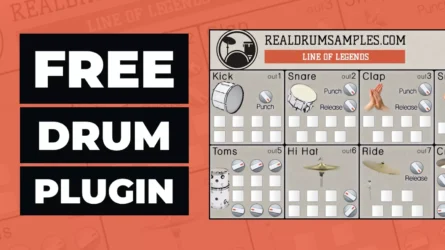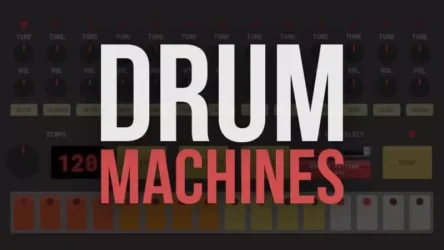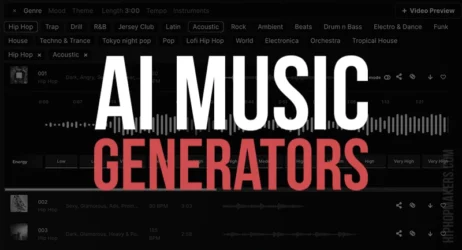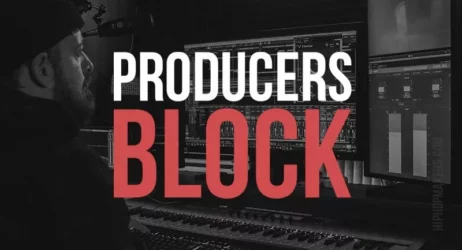In this simple guide, we will answer what is reverb in music, its purpose, provide examples of reverb, and how to add reverb to your music projects.
What Is Reverb In Music?
A Reverb (sometimes called Reverberation) is an audio effect that creates a sense of space by making a sound appear to bounce off of different surfaces. This type of reverb is often used to enhance vocals in music recordings because it creates an echo-like effect around the vocalist’s voice.
- What Is Reverb In Music
- What Is a Reverb Example
- What Is The Purpose Of Reverb
- Difference Between Reverb & Echo
- How Do You Use Reverb In Music
- What Is Reverberation
- Is a Reverb Like An Echo
- Do Vocals Need Reverb
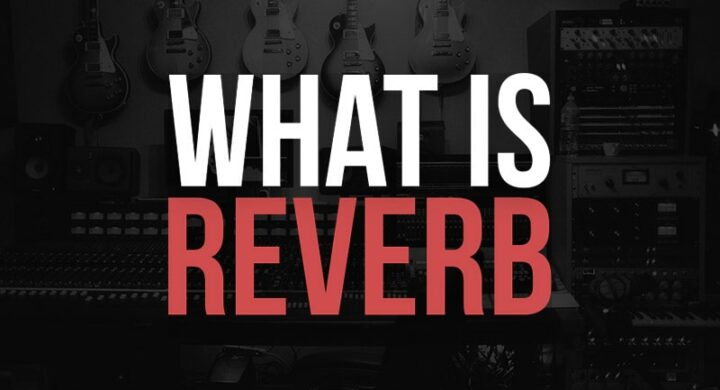
What Is Reverb In Music?
Reverb in music is essentially a pattern of beautiful reflections or echoes of a particular sound. It can be thought of as the persistence or presence of a specific tune after the original sound.
A reverb, also known as a reverberation, occurs when a sound or audio signal is rebounded, causing multiple echoes to accumulate and eventually decrease when the sound is collected by the surfaces of elements in the room, including furniture, people, and air.
A reverb in music is most apparent when the audio source ceases to produce a sound. When the source stops making sound, an echo of the original tone can be heard. The reflections continue to decrease in amplitude until they reach zero.
The fading time, or reverberation time, is given special consideration in the architectural design of rooms that require precise reverberation lengths to provide optimum performance for their intended activity.
Reverberation is the occurrence of reflections that come in a sequence of less than 50ms, as opposed to a distinct echo, which is heard at a minimum of 50 to 100ms following the preceding sound. The amplitude of the reflections progressively decreases to non-noticeable levels as time passes.
Reverberation is not confined to interior places; it may also be seen in woods and other outdoor situations where there is reflection.
Related: 50 Best Free Reverb VST Plugins
When a person performs, speaks, or plays an instrument physically in a hall or performance venue with sound-reflective surfaces, reverberation occurs automatically. Artificial reverberation is achieved by using reverb effects, which replicate reverb using methods like echo chambers and vibrations conveyed through metal and digital processing.
Although reverberation can enhance the genuineness of recorded sound by creating a feeling of depth, it can also diminish speech comprehensibility, mainly when noise is there. People with hearing loss, particularly hearing aid users, typically have trouble comprehending speech in reverberant, loud environments.
Furthermore, reverberation is also a significant source of errors in automatic speech recognition.
Today, you’ll find a plethora of effective methods of producing a reverb in music. However, contemporary forms of building reverb in music revolve around the use of digital reverb-producing facilities. Maestros use digital means to create a reverb in music for additional control and flexibility in their music-producing strategy.
The reverberation time is the duration it takes for a sound to “fade away” in a confined environment after the source has ceased generating sound.
According to the Atlantic, reverberation is “probably the oldest and most widespread sound effect in music,” being utilized in music as early as 10th-century plainsong. Composers such as Bach produced music to take advantage of the dynamics of specific reverb structures.
The extended reverberation duration of cathedrals may have influenced the development of Gregorian chant, restricting the number of notes that could be played before merging unevenly.
What Is a Reverb Example?
A musical piece with a touch of reverb dynamics has its way of making it into the spotlight. Listed below are some of the top examples of songs that you never knew featured reverb (all until now):
- Joe Meek’s “I Hear A New World”
- Phil Collins “In the Air Tonight”
- Blake Mills “Shed Your Head”
- Grimes “Venus In Fleurs”
- Led Zeppelin “When the Levee Breaks”
- Shinedoe “Cosmic”
- The Drums “Down by The Water”
- King Tubby “Dub You Can Feel”
What Is The Purpose Of Reverb?
The primary motive of reverb in music is to add flair to musical notes by making them stand out among other pieces of music. Reverb in music allows for added natural harmonics to earn their place in the spotlight by instilling emotions and deep feelings inside the listeners.
Even if you’re not performing in an extravaganza, adding reverb to your mix enables you to warp your audience to concert halls, cathedrals, caves, mountains, or theaters. The place you are going to transport your audience depends on the theme of your reverberating cadence.
In the DAW, you may apply reverb to your vocals to give them a new or distinct space. With a glittering platter, reverb may enhance the timbre and performance, or it can make a vocal recorded in a bedroom sound like it was recorded in a gigantic arena.
Natural reverberations are simulated or exaggerated by reverb pedals or effects. This helps enhance the ‘mood’ of a particular beat and results in more complex, savage, and intelligent tweaks in the usual reverb dynamics.
What Is The Difference Between Reverb & Echo?
Many people confuse reverbs in music with an echo, and the two of them are almost the same except for one significant difference – time. Both reverbs and echoes pinpoint reflections of a tune in space; however, you can expect a much shorter reflection time with reverbs.
A reflection of a soundwave off a distant surface is referred to as an echo. The reflection of sound waves caused by the convergence of such echoes is known as reverberation. Humans can only hear an echo if the range between the sound source and the mirroring body is more than 50 feet. When a sound wave is bounced off a nearby surface, reverberation occurs.
Because of the space and time the sound wave travels, an echo is generally clear and differentiated. Because reverberations do not normally have enough space or time to travel, they might build upon each other, making them difficult to understand.
In reverb, the reflecting sound comes back within a second, commingling with the original sound that sired it in the first place. With reverberation, sound waves build on top of one other and arrive at the receiver or ear at different times, making comprehension or understanding challenging.
The accumulation of sound waves raises the vibrational energy in a room. The accumulation of power will ultimately arouse the structure and increase the overall volume of space.
How Do You Use Reverb In Music?
Musical connoisseurs usually use speakers and microphones to create reverb. The mechanics behind this are that the artist sends some tune through the speakers and into the microphone. This interconnection between the microphone and the speaker generates a reverb that is compounded into the mix.
In a typical chamber, you can only vary the reverb by moving the mic or speaker about the space or changing the surfaces. Some general tips for using reverb in music are:
- Keeping the bass guitar amp and kick drum dry.
- Lightly adding reverb to the vocals – an amount that is lesser than sprinkles from other instruments.
- Using more reverb on cymbals and toms in the recording studio.
- Sufficiently utilizing push guitars and keyboards behind vocals and close to the snare in deepness.
What Is Reverberation?
In psychoacoustics and acoustics, reverberation is the persistence of sound after it has been created.
The Tapco 4400 Analog Spring Reverberation Reverb Stereo Rack Unit is a reverb unit. This equalization unit allows you to fine-tune the reverb sound to fit the rest of the song correctly. You can indeed generate the sound of almost any theme with this reverb unit.
With Tapco 4400 Analog Spring Reverberation Reverb Stereo Rack Unit, you have total control over the reverb; you may utilize it without it seeming false or contrived. The objective is to make the reverb seem so natural that it almost goes unnoticed.
Is a Reverb Like An Echo?
Reverb is much like an echo, but the two aren’t different names for the same thing. Reverb and echo differ in the time that the reflected beat enters the ears of the listener. Reverbs in music usually have a much shorter reflection time than an echo.
Most reverb in music is reflected back within a second (or lesser) and merged with the original producing beat to concoct a rhythm that is a fusion of the two – the reflected and original tone. Echoes are usually harmonic reflections from a distant surface. On the other hand, a reverb is created as a result of the superposition of echoes.
Reverbs can sometimes be more complicated to comprehend than their counterparts – echoes. This is due to the fact that, in reverberation, sound waves stack up on top of each other. These stacked-up sound waves enter the audience’s ears at different times, making them nearly impossible to apprehend.
Do Vocals Need Reverb?
While vocals don’t necessarily need reverb, adding reverb to vocals makes them pop.
It gives them additional richness and endurance, as well as a more “natural” sound. However, reverb may also drive the vocals further back in the mix. This is because reverb overlaps and washes out the words of vocals, and reverb might lead your lyrics to lose vitality and cohesiveness.
Summary of Reverb in Music
A reverb in music is an electronically produced echo or sound effect that complements a specific tune. As a reverb occurs in a space, it sends powerful sound waves in all directions. These sound waves are later reflected back and forth until they ultimately fade away.
I hope you found this information on reverb in music helpful.
If we missed anything, please share it in the comments.
Related: What Is Delay In Music?

